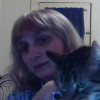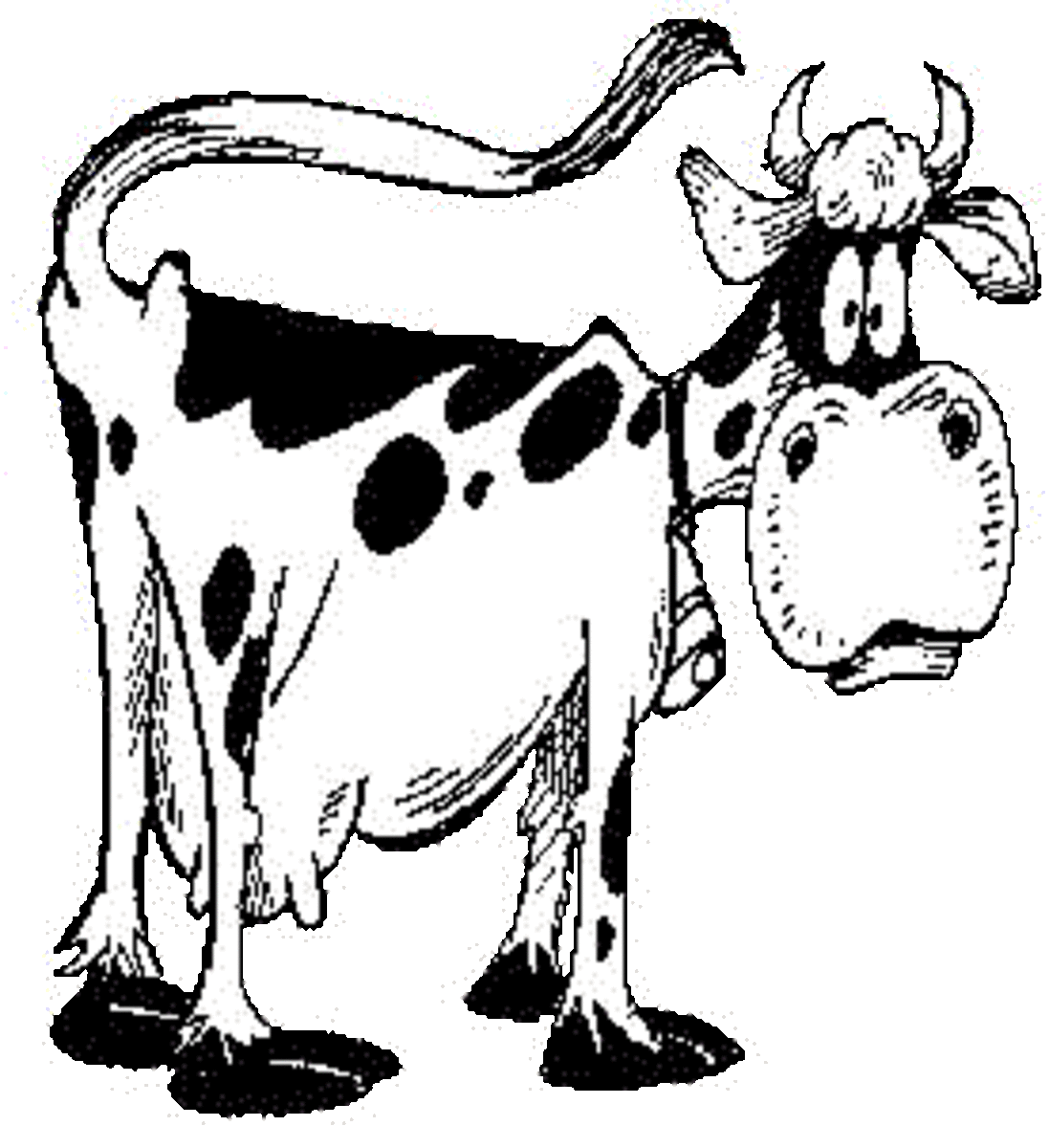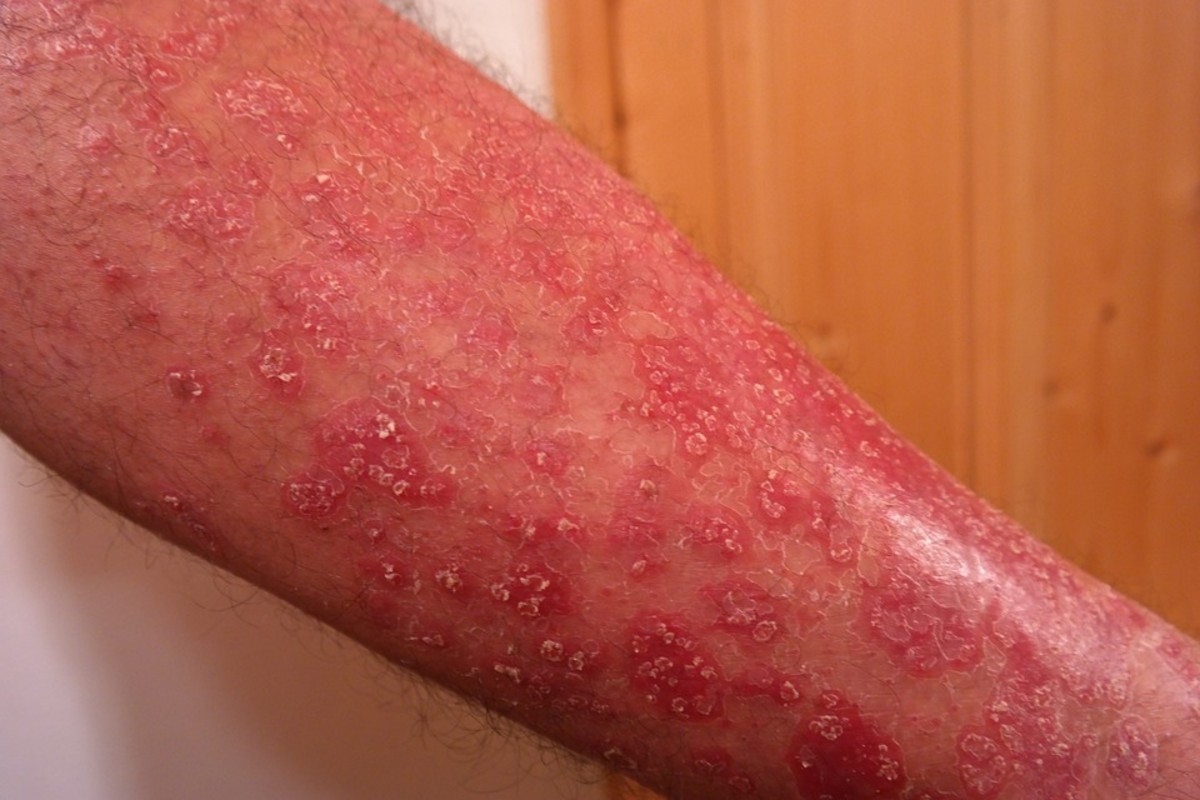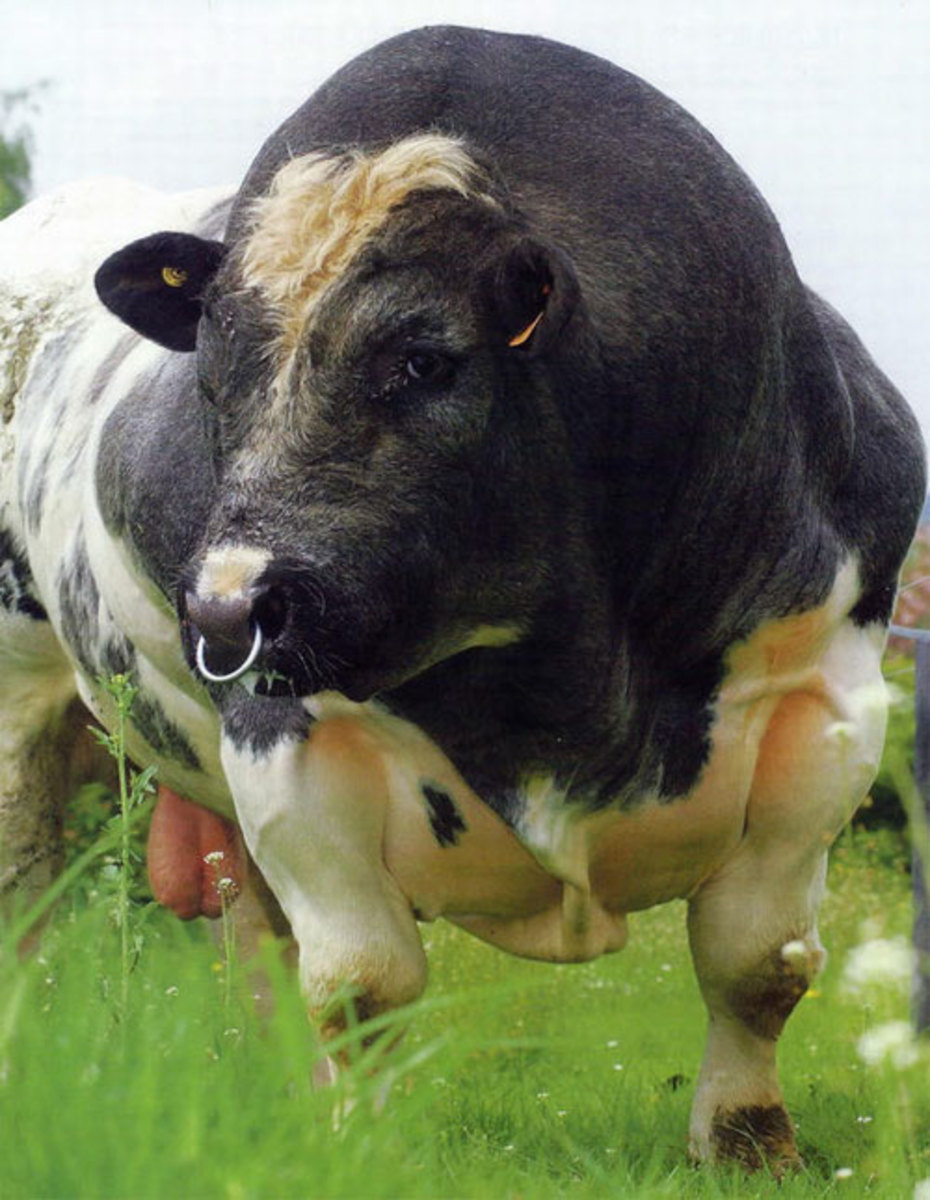Mad Cows and Mad Cow Disease
Mad Cow Disease and Prions
Mad Cow is a disease caused by a deformed prion that infects the brain and spinal cord of cattle. The deformed prion is mutated. Mad Cow's scientific name is: Bovine Spongiform Encephalopathy. Prions are suspected (pree-ons) to be the cause of Mad Cow Disease. Diseased prions are abnormal. Mutated prions are the cause of tiny sponge-like holes in the brain tissue of cattle. which is where the disease gets its name. Deformed prions eat tiny, little holes in the brains of cattle, that causes the brain to become soft and spongy. The brains infected with Mad Cow Disease deteriorate, and symptoms occur that eventually affect the whole body of the cow, which results in the death of the cow. There is no cure for Mad Cow Disease, or the human form (CJD or vCJD) of the disease. There is no cure or treatment for this horribly, fatal disease.
Mad Cow Disease
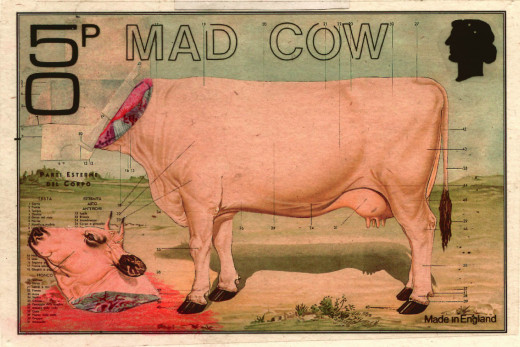
Prions Are Not Like Bacteria or Viruses
A prion self-replicates itself and is an infectious agent that consists only of protein. Prions can replicate like viruses. Bacteria and viruses, both, have nucleic acid, which allows them to reproduce themselves. Prions, on the other hand, don"t have a nucleic acid genome. Prions are highly resistant to heat, ultraviolet light, radiation, and disinfectants that would kill bacteria and viruses. Prions can"t be destroyed by cooking the tissues of an infected cow. The deformed prions are mostly concentrated in the brain and spinal cord tissues of infected cows. Humans can't get BSE from cattle (the cow form of the disease), but humans can acquire a human form called "Variant Creutzfeldt-Jakob disease (vCJD) or New Variant Creutzfeldt-Jakob disease (nVCJD). The first case of the disease was discovered in Great Britain in 1985, when a cow was seen having unusual symptoms, and soon died afterward. There have been few cases of Mad Cow disease in the United States. Only one in one million people worldwide may become infected with Creutzfeldt-Jakob disease. There is no cure for Creutzfeldt-Jakob disease. The disease is fatal.
A Bovine Prion Protein
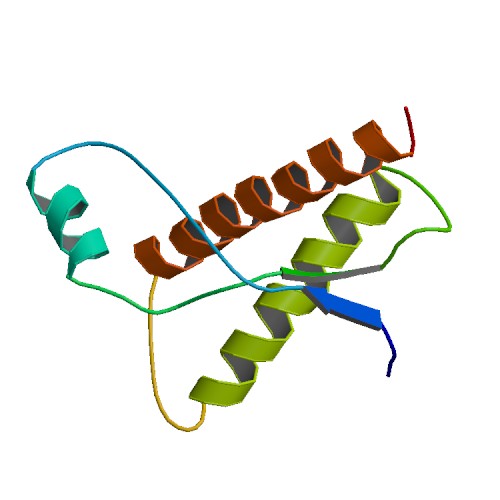
Tha Causes of Mad Cow
The suspected cause of Mad Cow disease is believed to of been caused by cattle feed. Cattle were fed feed that contained rendered ingredients, which contained the infectious agent. Cattle are herbivores and they consumed rendered parts from infected cows, and other infected animals that carried the infectious prion. The rendered animals, such as cows or sheep had the diseased prion in their brains and spinal cords, and when living cattle ate the feed, they, also, acquired the deadly, fatal disease. The prion disease can take several months or even years to appear. The incubation period for cattle that acquire the disease is from two to eight years, before symptoms are noticeable. Researchers and investigators have done a lot of research in finding the cause of Mad Cow disease.
Regulations To Prevent BSE
In 1997 regulations were adopted in regards to feed for cattle to prevent BSE. Mammals may not be used in feed for cattle (cud-chewing animal) or ruminants, which could carry Mad Cow Disease. All products that are rendered must carry a label which says, "Do Not Feed To Ruminants." Sheep and certain animal parts were banned from feed for cattle. Animals with similar brain wasting diseases were banned from being used in feed, along with cows. Companies that make the feed must make sure that the feeds are not accidentally mixed up with any material that could contain BSE. They must have a system in place to prevent the mixing up of feed. They must keep records.
Prions Video
All Cattle in Canada Must Wear Eartags
On August 4, 2001 "The Canadian Cattle Identification Program", was put into effect. All of the cattle in Canada has to wear a tag on their ear with a number, so that the beef or dairy cow could be traced back to the farm where they were born to find the source of any disease. BSE has a long incubation period which could be 30 months to 8 years. New enhanced feed bans were put into effect by, The United States and Canada. In April 2009, the FDA issued a regulation that came into effect October 26, 2009. Canada put in an enhanced feed ban in 2007 that prohibits most proteins from animals from being used in feed. Specified Risk Materials (SRM) are potentially BSE infected tissues that are included in the ban, and are prohibited for use in all animal feeds, pet foods, and fertilizer, not just from cattle feed like the ban that was put into place in 1997. The United States had a similar feed ban like Canada back in 1997.
Kuru and Cannibalism
Kuru is a type of transmissible spongiform encephalopathy, caused by diseased prions found in people, who practice cannibalism. When living people (cannibals) ingest a deceased individual with the disease (kuru), they acquire the disease from that individual, and die. A tribe that practices eating deceased family members that had Kuru, will eventually, develop the disease themselves, and die. Kuru may take months or even years to show its deadly symptoms. People with Kuru shiver, and they, eventually, lose all ability to walk, and then, quickly die. There's no cure for Kuru. Kuru can be prevented by not practicing cannibalism.
To Find Out More About Mad Cow Disease
Facts About Mad Cow Disease
Some facts about Mad Cow disease:
- Mad Cow disease is also called Bovine Spongiform Encephalopathy (BSE).
- Mad Cow disease was recognized as a disease in 1986.
- Mad Cow disease causes structural changes in the brain.
- Mad Cow disease causes difficulty in muscle coordination, standing and walking.
- Mad Cow disease caused weight loss in cattle afflicted with the disease.
- Mad Cow disease causes a significant reduction in milk production in cows with the disease.
- Mad Cow causes behavioral and attitude changes in cattle.
- The first case of Mad Cow disease was discovered in the United Kingdom in 1985.
- Cooking will not break down deformed prion proteins.
- A case of BSE was confirmed in Canada on February 18, 2011 when a dairy cow that was born in Alberta in 2004, was found to be infected with the disease. The cow did not enter the human food or animal feed systems.
- Mad Cow disease is fatal. There is no cure or treatment.
- It can take years, before the symptoms of Mad Cow disease appears in a cow that is infected with the prion that causes the disease.
- Humans can not get BSE. Humans can get Creutzfeldt-Jakob disease or Variant Creutzfeldt-Jakob disease.
A fun trivia quiz on Mad Cow disease can be found at: www.funtrivia.com>Cattle. There are many facts on Mad Cow disease on the funtrivia website. The quiz on Mad Cow disease can be found by clicking on animals, then other domestic animals, and finally click on cattle. The quiz is on a list of trivia quizzes on cattle.
